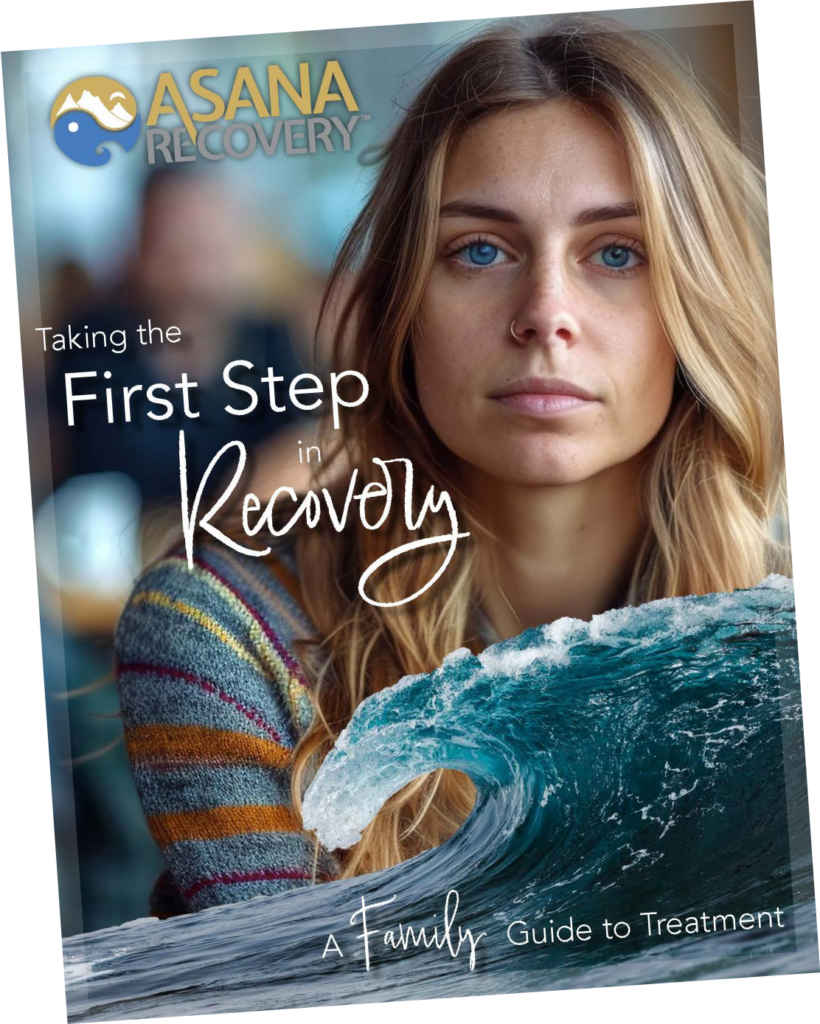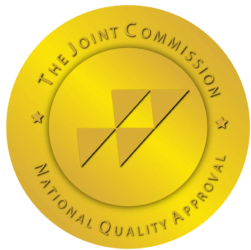Psilocybin mushrooms, commonly referred to as “magic mushrooms” or “shrooms,” contain the hallucinogenic compound psilocybin, which interacts with serotonin receptors in the brain to alter perception, mood, and cognition. While these substances have gained attention for their potential therapeutic benefits, they also pose risks when consumed in high doses.
But can you overdose on shrooms? The answer depends on how we define “overdose.” Unlike opioids or alcohol, a psilocybin overdose is not typically fatal, but taking too many psychedelic mushrooms can lead to severe psychological distress, dangerous physical symptoms, and potential long-term mental health effects.
This guide explores whether you can overdose on mushrooms, how to recognize overdose symptoms, and harm reduction strategies for safer use.
A psilocybin overdose differs from overdoses caused by substances like opioids, alcohol, or stimulants. Unlike drugs that cause respiratory depression or cardiac failure, shroom overdose symptoms typically involve severe mental distress, hallucinations, paranoia, and temporary psychotic episodes.
A psilocybin overdose differs from overdoses caused by substances like opioids, alcohol, or stimulants. Unlike drugs that cause respiratory depression or cardiac failure, a shroom overdose typically results in severe mental distress, hallucinations, paranoia, and temporary psychotic episodes rather than fatal toxicity. However, consuming excessive amounts of magic mushrooms or psychedelic mushrooms can still be dangerous, both mentally and physically.
The effects of a magic mushroom overdose depend on the amount consumed, individual tolerance, and environmental factors. For some users, even a moderate dose can cause intense hallucinations, paranoia, or extreme emotional distress, while others may require a higher amount to experience similar effects.
A microdose of psilocybin mushrooms, typically between 0.1 to 0.3 grams, is not intended to cause hallucinations but may result in subtle mood enhancements and heightened sensory perception. At a low dose, around 1 to 2 grams, users often experience mild euphoria, changes in perception, and an enhanced appreciation for colors and music. However, as the dosage increases, so do the intensity of the effects and the risk of a bad trip or shroom overdose.
A moderate dose, between 2 and 3.5 grams, can lead to visual distortions, time dilation, and a strong sense of interconnectedness or detachment from reality. This is the dose range where some users begin to experience panic attacks or paranoia, particularly in unsettling environments.
When someone takes more than 3.5 grams of psychedelic mushrooms, the effects become significantly more unpredictable and intense. At high doses of 3.5 to 5 grams, many users report experiencing ego dissolution, a state where they lose their sense of identity and feel detached from reality. While some find this experience profoundly meaningful, others may feel terrified, trapped, or disoriented. A bad trip at this level can quickly escalate into an overwhelming psychological crisis, leading to paranoia, confusion, and even temporary psychotic episodes.
For those who consume more than 5 grams of magic mushrooms, the risk of a psychedelic mushroom overdose increases dramatically. This extreme dose can cause profound hallucinations, an altered sense of time, and a complete loss of connection with the physical world. Many users at this stage report feeling like they are stuck in eternity, unable to distinguish between reality and hallucination. This level of psilocybin overdose is where most medical emergencies occur, as users may become delirious, unresponsive, or engage in dangerous behaviors due to altered perception.
While a fatal overdose on psilocybin mushrooms is highly unlikely, taking too much can still lead to severe psychological distress and dangerous physical side effects. Many people wondering “Can you overdose on shrooms?” mistakenly believe that because psilocybin is a natural substance, it is inherently safe. However, consuming an excessive amount of psychedelic mushrooms can result in extreme paranoia, dissociation, and loss of control.
Additionally, individuals who mistake toxic mushrooms for psilocybin mushrooms may unknowingly ingest a deadly dose of poisonous fungi. Some species of toxic mushrooms closely resemble magic mushrooms, and consuming them can lead to severe poisoning, organ failure, or death.
Although psychedelic mushroom overdoses are not typically fatal, their effects can be overwhelming and potentially dangerous, especially in individuals with underlying mental health conditions. Users should always approach magic mushroom use cautiously, starting with lower doses in safe, controlled environments to reduce the risk of a bad trip or medical emergency.
Asana Recovery works with most PPO plans, covering up to 100%. See if your insurance can help fund your journey. Click below to get a free quote.

The “bad trip” phenomenon involves:
Many users describe feeling “trapped in eternity” or experiencing ego death gone wrong, where they lose their sense of self but remain in a state of extreme fear.
While magic mushrooms are not inherently toxic, consuming too much psilocybin can result in:
Though shroom overdoses are not life-threatening, they can become a medical emergency if symptoms escalate.
People frequently ask: Can you overdose on magic mushrooms? Can you overdose on psychedelic mushrooms?
The lethal dose (LD50) of psilocybin in humans is unknown, but extrapolated from animal studies, it would take around 3kg (or over 10,000 fresh mushrooms) for a fatal dose. However, the real risks of a psychedelic mushroom overdose come from:
While a shroom overdose itself is not fatal, these secondary risks can turn life-threatening.
Call 911 if:
There are no verified cases of fentanyl-laced mushrooms, but contamination risks exist.
To avoid a laced shroom overdose:
If someone shows symptoms of fentanyl poisoning (slow breathing, blue lips, unconsciousness), administer naloxone (Narcan) immediately and call emergency services.
While psilocybin mushrooms are not physically addictive, they can lead to psychological dependence in some users.
Although the 2024 National Survey on Drug Use and Health found only 0.5% of psilocybin users develop substance use disorders, long-term emotional and cognitive effects can still occur
At Asana Recovery, we understand the complexities surrounding substance use, including psilocybin mushrooms. Whether you’re exploring their potential benefits or facing challenges related to their misuse, our dedicated team is here to guide you. We offer a compassionate, evidence-based approach to help you navigate the risks, manage adverse experiences, and explore healthier alternatives.
Your journey to clarity and balance starts with professional support. Contact Asana Recovery today to learn how our tailored programs can empower you to make informed decisions and achieve lasting wellness. Together, we can help you regain control and move toward a safer, healthier future. Reach out now to start your journey.
We get it. Addiction recovery is tough. That’s why our programs are founded and staffed by people in recovery – people who truly understand.

Yes, you can overdose on shrooms, but not in the same way as with opioids or alcohol. A psilocybin overdose is typically psychological rather than physically toxic. Taking too many magic mushrooms can result in severe anxiety, paranoia, hallucinations, confusion, and even psychotic episodes. While fatal overdoses are extremely rare, consuming excessive amounts can lead to dangerous behaviors, self-harm, or extreme distress requiring medical attention.
A fatal overdose from psychedelic mushrooms alone is highly unlikely. However, a shroom overdose can still be dangerous if it leads to panic, erratic behavior, or environmental risks (such as walking into traffic or drowning). Additionally, ingesting the wrong type of mushroom—such as a toxic variety mistaken for psilocybin mushrooms—can be deadly.
If you consume too many psychedelic mushrooms, you may experience an intensely distressing trip with overwhelming hallucinations, paranoia, panic attacks, or a complete loss of reality perception. Physically, you might develop nausea, vomiting, an increased heart rate, and excessive sweating. In extreme cases, a shroom overdose may cause seizures, severe confusion, or erratic behavior that poses a danger to yourself or others.
The effects of a magic mushroom overdose typically last 6 to 12 hours, depending on the dose, individual tolerance, and setting. However, psychological aftereffects like anxiety, paranoia, or mood disturbances can persist for days or even weeks in extreme cases.
Yes, consuming a high dose of psilocybin mushrooms (over 5 grams or more) can cause a psychological overdose, leading to terrifying hallucinations, loss of self-identity, and paranoia. While psilocybin itself is not considered toxic in normal doses, taking too much can overwhelm the brain’s serotonin system, leading to a dangerous and deeply distressing experience.
Individuals with underlying mental health conditions, especially schizophrenia, bipolar disorder, or severe anxiety, are at higher risk of experiencing psychotic episodes, paranoia, or extreme emotional distress from a shroom overdose. Psilocybin mushrooms can trigger latent psychiatric disorders, making them high-risk for those with pre-existing conditions.
Yes. Although there are no confirmed cases of fentanyl-laced shrooms, some illicit mushrooms sold on the black market may be laced with LSD, PCP, or synthetic drugs that significantly alter their effects. Taking laced mushrooms can increase the risk of overdose symptoms, including severe hallucinations, violent behavior, unconsciousness, or respiratory depression. If someone shows signs of fentanyl poisoning (slow breathing, blue lips, unconsciousness), administer naloxone (Narcan) immediately and call 911.
A bad trip is a form of psilocybin overdose that causes intense psychological distress. Common signs include:
A bad trip can last several hours and leave lingering emotional effects. If someone is having a bad trip, it’s important to keep them calm, remove them from stressful environments, and offer reassurance that the effects will wear off.
To reduce the risk of a shroom overdose, follow these harm reduction tips:
If someone experiences a bad trip or psychedelic mushroom overdose, take these steps:
Seek emergency medical help if the person experiences:
Psilocybin mushrooms are not physically addictive, but they can cause psychological dependence in some users. People who frequently use shrooms in high doses may develop a pattern of chronic escape-seeking behavior, where they rely on psychedelics to avoid reality.
Additionally, psilocybin tolerance builds quickly, meaning users must take increasingly higher doses to achieve the same effects—which increases the risk of a shroom overdose or a distressing trip.
Yes, mixing psychedelic mushrooms with alcohol, stimulants, or prescription medications can increase the risk of negative effects and overdose symptoms. Some dangerous interactions include:
Most people recover from a shroom overdose without long-term effects. However, in some cases, frequent high-dose psilocybin use can result in:
Take your first step towards lasting recovery. At Asana, we offer effective, insurance-covered treatment for addiction and mental health, guided by experts who understand because they’ve been there. Start your healing today.

This book has helped so many men and women; and we want to give it you for FREE. Get signed up today and discover how to unlock the grip of addiction and get back to living your best life.
In this book, you’ll discover…
— The Most Common Misconceptions About Addiction and Rehab
— Why Rock Bottom is a Myth and What You Can Do About It
–The Steps to Healing From Trauma, Both Mentally and Emotionally
–And much more!

Asana Recovery is licensed and certified by the State Department of Health Care Services.


© Copyright 2024 Asana Recovery™ | All Rights Reserved | Privacy Policy
You could save up to 100% of your treatment using your Insurance.





Asana Recovery
We firmly believe that the internet should be available and accessible to anyone, and are committed to providing a website that is accessible to the widest possible audience, regardless of circumstance and ability.
To fulfill this, we aim to adhere as strictly as possible to the World Wide Web Consortium’s (W3C) Web Content Accessibility Guidelines 2.1 (WCAG 2.1) at the AA level. These guidelines explain how to make web content accessible to people with a wide array of disabilities. Complying with those guidelines helps us ensure that the website is accessible to all people: blind people, people with motor impairments, visual impairment, cognitive disabilities, and more.
This website utilizes various technologies that are meant to make it as accessible as possible at all times. We utilize an accessibility interface that allows persons with specific disabilities to adjust the website’s UI (user interface) and design it to their personal needs.
Additionally, the website utilizes an AI-based application that runs in the background and optimizes its accessibility level constantly. This application remediates the website’s HTML, adapts Its functionality and behavior for screen-readers used by the blind users, and for keyboard functions used by individuals with motor impairments.
If you’ve found a malfunction or have ideas for improvement, we’ll be happy to hear from you. You can reach out to the website’s operators by using the following email
Our website implements the ARIA attributes (Accessible Rich Internet Applications) technique, alongside various different behavioral changes, to ensure blind users visiting with screen-readers are able to read, comprehend, and enjoy the website’s functions. As soon as a user with a screen-reader enters your site, they immediately receive a prompt to enter the Screen-Reader Profile so they can browse and operate your site effectively. Here’s how our website covers some of the most important screen-reader requirements, alongside console screenshots of code examples:
Screen-reader optimization: we run a background process that learns the website’s components from top to bottom, to ensure ongoing compliance even when updating the website. In this process, we provide screen-readers with meaningful data using the ARIA set of attributes. For example, we provide accurate form labels; descriptions for actionable icons (social media icons, search icons, cart icons, etc.); validation guidance for form inputs; element roles such as buttons, menus, modal dialogues (popups), and others. Additionally, the background process scans all the website’s images and provides an accurate and meaningful image-object-recognition-based description as an ALT (alternate text) tag for images that are not described. It will also extract texts that are embedded within the image, using an OCR (optical character recognition) technology. To turn on screen-reader adjustments at any time, users need only to press the Alt+1 keyboard combination. Screen-reader users also get automatic announcements to turn the Screen-reader mode on as soon as they enter the website.
These adjustments are compatible with all popular screen readers, including JAWS and NVDA.
Keyboard navigation optimization: The background process also adjusts the website’s HTML, and adds various behaviors using JavaScript code to make the website operable by the keyboard. This includes the ability to navigate the website using the Tab and Shift+Tab keys, operate dropdowns with the arrow keys, close them with Esc, trigger buttons and links using the Enter key, navigate between radio and checkbox elements using the arrow keys, and fill them in with the Spacebar or Enter key.Additionally, keyboard users will find quick-navigation and content-skip menus, available at any time by clicking Alt+1, or as the first elements of the site while navigating with the keyboard. The background process also handles triggered popups by moving the keyboard focus towards them as soon as they appear, and not allow the focus drift outside it.
Users can also use shortcuts such as “M” (menus), “H” (headings), “F” (forms), “B” (buttons), and “G” (graphics) to jump to specific elements.
We aim to support the widest array of browsers and assistive technologies as possible, so our users can choose the best fitting tools for them, with as few limitations as possible. Therefore, we have worked very hard to be able to support all major systems that comprise over 95% of the user market share including Google Chrome, Mozilla Firefox, Apple Safari, Opera and Microsoft Edge, JAWS and NVDA (screen readers).
Despite our very best efforts to allow anybody to adjust the website to their needs. There may still be pages or sections that are not fully accessible, are in the process of becoming accessible, or are lacking an adequate technological solution to make them accessible. Still, we are continually improving our accessibility, adding, updating and improving its options and features, and developing and adopting new technologies. All this is meant to reach the optimal level of accessibility, following technological advancements. For any assistance, please reach out to